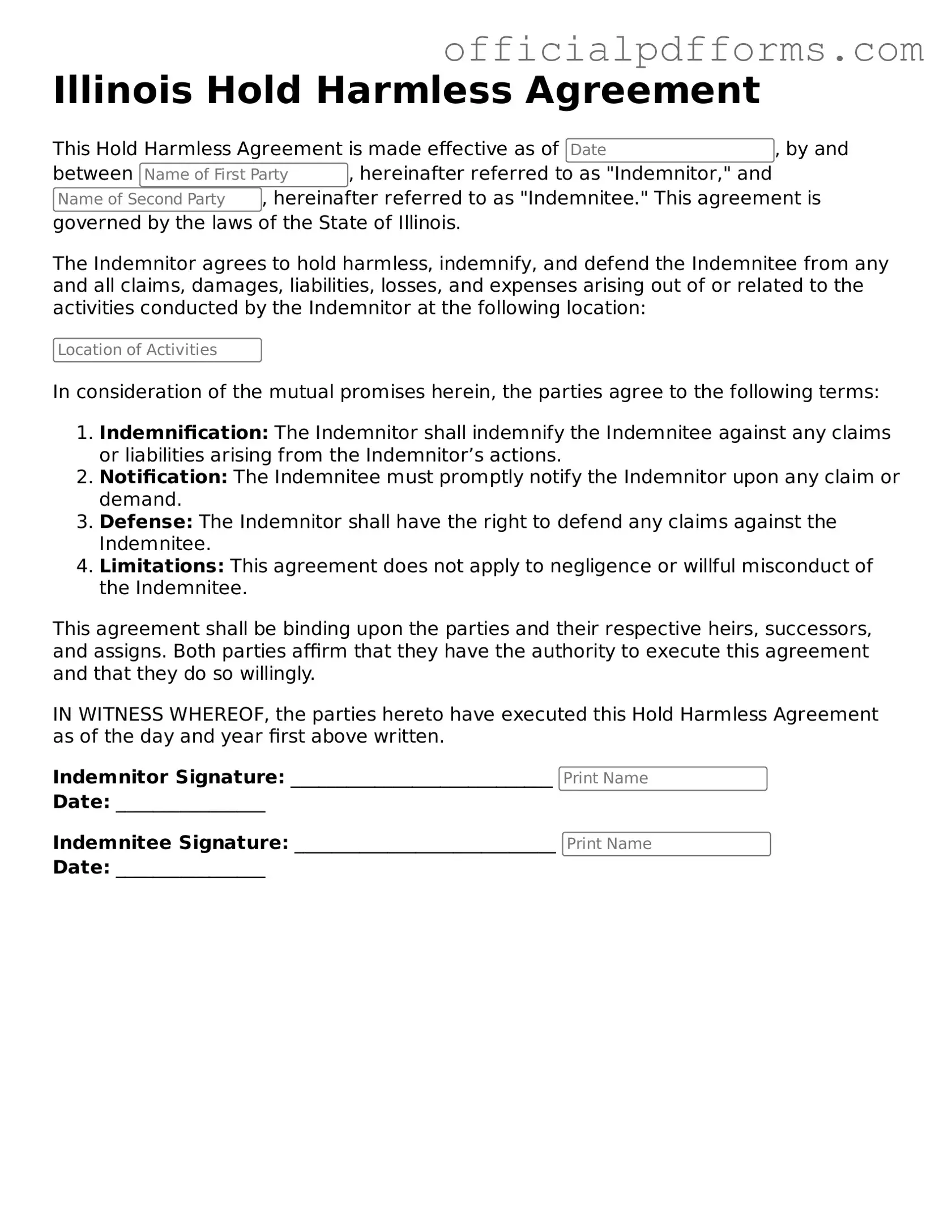What is a Hold Harmless Agreement?
A Hold Harmless Agreement is a legal document in which one party agrees to take on the responsibility for any losses or damages that may occur during a specific activity or event. This agreement is often used in various situations, such as construction projects, events, or when services are provided. By signing this agreement, the party assumes liability and protects the other party from claims that may arise.
Who typically uses a Hold Harmless Agreement in Illinois?
Various individuals and organizations use Hold Harmless Agreements. Common users include:
-
Contractors and subcontractors in the construction industry
-
Event organizers who host public or private gatherings
-
Property owners renting out their space for events
-
Service providers offering activities that may pose risks
These agreements help manage risk and clarify responsibilities between parties involved.
What are the key components of a Hold Harmless Agreement?
A typical Hold Harmless Agreement includes several important elements:
-
Identification of Parties:
The agreement should clearly identify the parties involved, including their names and addresses.
-
Scope of Agreement:
It should specify the activities or events covered by the agreement.
-
Liability Waiver:
The agreement must outline the extent of liability that is being waived by one party.
-
Indemnification Clause:
This clause states that one party agrees to protect the other from any claims or damages.
-
Signatures:
Both parties should sign the agreement to make it legally binding.
Is a Hold Harmless Agreement legally binding in Illinois?
Yes, a Hold Harmless Agreement can be legally binding in Illinois, provided it meets certain requirements. The agreement must be clear, specific, and voluntarily signed by both parties. However, it’s important to note that some limitations exist. For instance, a Hold Harmless Agreement cannot protect a party from liability arising from their own negligence in certain situations.
Are there any limitations to a Hold Harmless Agreement?
Yes, there are limitations. While these agreements can provide significant protection, they cannot absolve a party from liability for gross negligence or willful misconduct. Additionally, if the language of the agreement is vague or ambiguous, it may not be enforceable in court. It's crucial to draft the agreement carefully to ensure it effectively serves its intended purpose.
How can I create a Hold Harmless Agreement?
Creating a Hold Harmless Agreement involves several steps:
-
Identify the parties involved and their roles.
-
Clearly outline the activities or events that the agreement covers.
-
Draft the terms of the agreement, including the indemnification clause and liability waiver.
-
Review the document to ensure clarity and completeness.
-
Have both parties sign the agreement.
While templates are available online, it may be beneficial to consult with a legal professional to ensure that the agreement meets all necessary legal standards and adequately protects your interests.
Can a Hold Harmless Agreement be revoked?
A Hold Harmless Agreement can generally be revoked, but the process depends on the terms outlined in the agreement itself. If the agreement specifies conditions under which it can be terminated, those must be followed. If no such terms exist, it may be more complicated. It is advisable to consult with a legal professional to understand the implications and process of revoking such an agreement.
